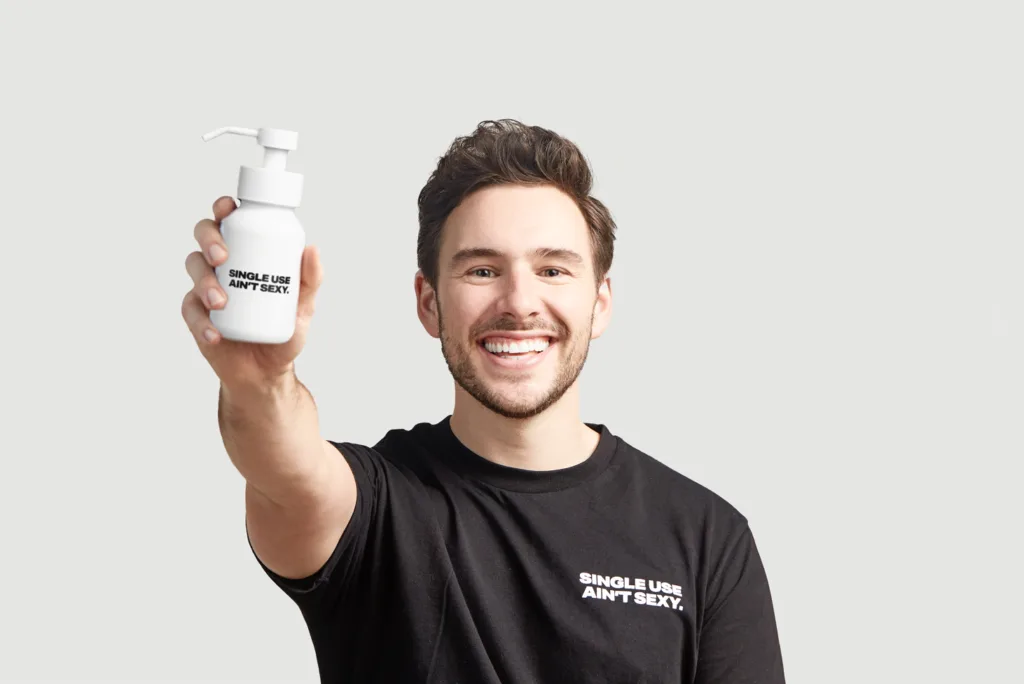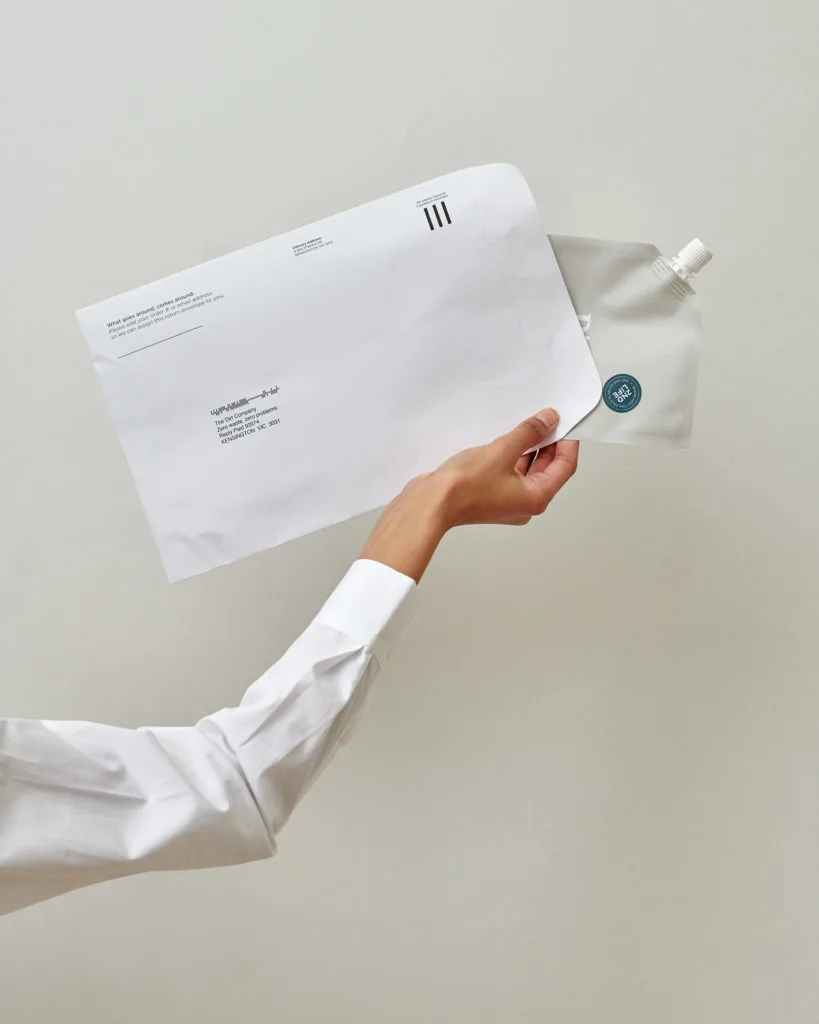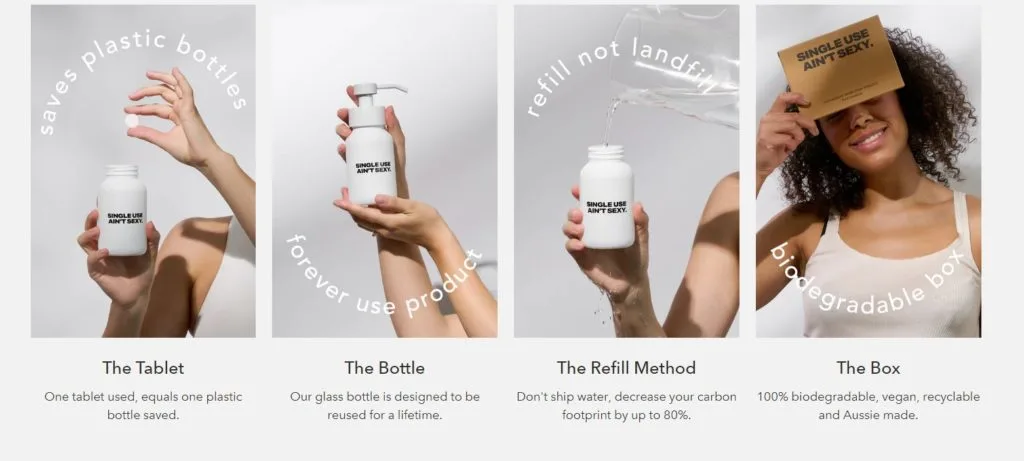In this article
As a business owner, you’re sure to deal with packaging most days. Even if you’re not a product-based business, chances are you manage and dispose of a certain amount of packaging waste.
Today, with climate change and sustainability more of a focus than ever before, consumers expect organisations to do their part in minimising their carbon footprint and waste as much as possible.
We spoke with some business owners and a consultant about how entrepreneurs can lift their game when it comes to more eco-friendly packaging in 2022 and beyond.
In this article, you’ll learn:
Shifts in consumer sentiment towards packaging
Benefits for businesses considering eco-friendly solutions
Considerations before going ‘all in’ on sustainable packaging
Tips for marketing your sustainable packaging policies
Consumers are more environmentally aware than ever
For many people, having a positive impact on the environment is enough to look at ways to minimise packaging in their organisation and find ways to use more eco-friendly solutions.
However, we know this can sometimes be expensive, time-consuming and challenging to implement.
If you’re on the fence, it’s worth keeping in mind that consumers are expecting an increasing amount from brands when it comes to corporate social responsibility initiatives, including sustainability measures, so the investment you make today can pay off when it comes to differentiating yourselves from the competition.
In a 2020-released report titled ‘Sustainability in packaging: Inside the minds of global consumers,’ research firm McKinsey released data from their survey of around 10,000 consumers across ten countries about their attitudes towards sustainable packaging. Three key findings came from the investigation.
First, shoppers place a lot more value on food safety and hygiene due to the global COVID-19 pandemic, meaning there’s a push for smarter packaging choices. In turn, manufacturers have to rethink material and design requirements.
Second, consumers see sustainability as increasingly vital right now, with pollution and marine litter in particular top of mind. Most customers are willing to pay more for better packaging options.
Third, while there’s no consensus about which packaging type is most sustainable, people generally agree that far-from-sustainable options exist.
This means businesses are advised to steer clear of plastic, polystyrene, and other less desirable options.
Frankie Layton, the founder of The Dirt Company, an Australian company that makes refillable laundry concentrates with returnable packaging, believes that being sustainably minded is the “price of entry for a new business now”.
“I did some research on Google Trends and interestingly noticed that terms like “zero waste,” “recycling,” and “sustainable solutions” peaked in about 2020-2021.
“I think this is a reflection of the proliferation of options for the customer,” she said.
“This area is no longer what we’d call “breaking ground” or something people need to understand as a problem.
“Waste, carbon emissions, and other sustainability matters have become accepted knowledge, and now consumers have the job of finding which products they like best, from a sea of options.”
Layton points out that a Deloitte report backs this hypothesis.
“Though slightly down on last year, ethical and sustainability issues remain a key driver for almost a third of consumers, who claim to have stopped purchasing certain brands due to related concerns.”
Benefits of sustainable packaging for businesses
It’s great that sustainable packaging is better for the environment, but can it be better for business too?
This is the question I posed to Dr Helen Lewis, a consultant who runs Helen Lewis Research, which provides information and strategic advice on product stewardship and packaging, among other things.
She’s also an Adjunct Professor with the Institute for Sustainable Futures at the University of Technology Sydney.
Reduce costs, increase efficiencies
Lewis has seen entrepreneurs create savings in their firms by changing their packaging buying and usage habits.
A sustainability packaging strategy can potentially save businesses money by removing unnecessary packaging layers or components.
“Simplifying packaging can reduce costs,” she advised.
But there are other ways for businesses to become more frugal with packaging that have direct cost savings impact.
“Businesses can also save money by reducing the size of their packaging to ensure there is no unnecessary air space, also known as ‘right-sizing’,” said Lewis.
“This may mean cheaper packaging (less material), lower postage costs for online orders, the ability to pack more products into a box, or more boxes onto a pallet, for more efficient transport.”
Promote customer loyalty, improve brand image
For Josh Howard, the Founder and CEO of Single Use Ain’t Sexy, an Australian business selling dissolvable soap tables to help put an end to single-use plastic bottles, there are many reasons to care about packaging.
To him, benefits include that “it’s the right thing to do and it shows your customers you really care”.

For Josh Howard, Founder and CEO of Single Use Ain’t Sexy, sustainable packaging is his brand. Photo: Supplied.
“It’s another way to demonstrate how you’re incorporating sustainable practices into your brand and shows consumers that your brand is forward-thinking, progressive, community-minded, and socially-responsible,” he said.
For Layton, the primary benefit of opting for sustainable packaging over traditional offerings is that, in some form, the lasting negative impact of the purchase gets mitigated for the consumer.
“This may be in terms of materials in production (for example, where nothing new is used) or the end use of materials.”
She uses The Dirt Company’s refill packs as an example.
“Our refill packs contain 15 grams of plastic, made up of new plastic and plastic waste. A conventional big brand bottle containing the same amount of washing loads might have 120 grams of new plastic.
“With supermarket brands, you’re creating more than 4.5 grams of plastic every time you turn on the machine. With our system, that figure reduces to zero grams by the second time you order.”
Key considerations before going ‘all in’ on sustainable packaging
If you’re ready to take your business to the next level regarding packaging, there are various factors to consider.
Reduce the need for packaging where possible
Start by looking for opportunities to eliminate or reduce packaging first.
Lewis noted, “This way, you’re more likely to save money and deliver an environmental benefit.”
Layton approaches things in this way, too.
“To design sustainably, focus only on what is essential.
“If you approach a problem with a ‘less, but better’ philosophy, you’ll find that the by-product is a more sustainable offering.”
Avoid “greenwashing” at all costs
Look at environmental claims of the packaging options you’re considering carefully to avoid “greenwashing”, where companies use false or misleading claims about their goods.
Layton noted that you need to watch out for manufacturers’ claims.
“The person you buy your product from, especially in small batch quantities, is also just a person passing on a long chain of knowledge,” she said.
“Regardless of what your manufacturer is selling you (from natural products to recycled plastic), get origin certificates and do your due diligence.
“Consumers are less forgiving about ‘whoopsie’ moments when it comes to not doing your homework.”
Lewis suggested business operators start by going direct to their suppliers for key information and insight.
“Ask suppliers for verification of any claims about recyclability or compostability, as this is an area where we’re seeing more and more greenwash.”

The Dirt Company supplies customers everything they need to return their refill bags and continue their virtuous cycle. Photo: Supplied.
Compostable packaging must be certified to a certifiable standard. In Australia, you can find our about compostable certification on the Bioplastics website.
While New Zealand doesn’t currently have a compostable plastics certification, some international standards are recognised. Head to the Government’s Environment website for more.
“Also, the Australasian Recycling Label (ARL) is based on a rigorous recyclability assessment,” said Lewis.
“Use the ARL to advise your customers about how to dispose of packaging correctly.”
Undertake thorough research
Lewis advised, too, that entrepreneurs shouldn’t shift to alternative packaging materials until proper research is done.
“You need to understand whether or not it’s likely to deliver an environmental benefit.
“For example, if something is already being collected for recycling (such as PET water bottles), don’t replace it with a compostable bottle that is unlikely to be composted and will only contaminate the recycling stream.”
Lewis suggested people examine the latest information on recycling opportunities to see what’s new and helpful.
For example, check out the Australian Packaging Covenant Organisation (APCO)’s latest resource on this matter to learn how reusable packaging is being scaled up in 2022.
Look for scalable solutions
Howard said this is a vital component of changing packaging solutions, as you need to ensure that what you use will grow with your business as needed.
Ask customers for feedback
Howard also noted that getting input from your target market can help you see ideas or weak points to consider.
Don’t try to do everything at once
“Take baby steps,” said Howard. “Plus, don’t order too much packaging stock to begin with. Start small and then expand once you know you have a solution that works.”
Play the long game
Think about costs over a long period of time rather than as an immediate expense.
Layton pointed out that “finding sustainable solutions has a very real research and development cost upfront.
While government grants can mitigate this, you still need to think long-term.
“The end goal is that your investment eventually lowers the cost environmentally and economically in the long run.
“One business example of this is our cardboard shredder, which turns old boxes into our eCommerce parcel padding.
“The upfront cost to us was a few thousand dollars – we had previously spent over $1000 every month on having our cardboard waste recycled and buying HEX wraps to pad the boxes.
“The new machine will take under six months to return our investment.”
Don’t forget function and form
Ensure the packaging still has a pleasing design focus. It still must draw people in.
“The primary role design plays is creating products that people want to purchase,” Layton said.
“People will be less likely to buy if sustainability is the only thing you’re selling because your competitor might be offering sustainability plus low prices and beautiful design.
“Think of sustainability like a Trojan horse – design something people really want to buy and, it turns out, is also sustainable.
“Make it easy and desirable to do less harm and you’ll have great success.”
Howard agreed.
“There are so many incredible suppliers, materials, and alternatives on the market that we’re spoiled for choice.
“One of the big lessons I’ve learned is that you don’t have to compromise on style to be more eco-friendly.”
Keep innovating
Don’t rest on your laurels. New solutions continue arriving on the market all the time, so you’ll want to regularly take stock of what’s available and assess how you can continue to evolve your packaging as a result.
The Dirt Company released an impact report this year that includes a Materials Timeline showing the iteration of their products and packaging between 2017 and 2021.
This indicates how much change is possible in a short timeframe and why entrepreneurs need to stay open to updating their packaging solutions.
Tips for marketing with sustainable packaging
Once you’ve sourced and started using sustainable packaging solutions, you want to effectively market your firm’s choices.
Be transparent
Howard suggested entrepreneurs need to be careful that they’re transparent about their process and admit when things aren’t perfect. Moving to sustainable solutions takes time.
“Don’t say you do something when you don’t,” he recommended.
Educate, don’t ‘virtue signal’
Lewis said entrepreneurs must avoid greenwashing at all costs.
“Ensure all your claims can be backed up with verifiable information,” she said.
Explain to your community why the packaging you use is a better option
Howard feels it’s vital to educate your customer base and potential clients about what you offer and why.
“Tell the world about the strides you’re making,” he said. “It’s an exciting talking point, and people want to know about it.”
But that doesn’t mean you need to labour the point.
“Make it fun and don’t be too serious,” said Howard. “Think of some entertaining ways to bring people along on your sustainability journey.”

Single Use Ain’t Sexy’s marketing collateral reinforces the brand’s simple approach to sustainability.
Keep it simple
Layton said entrepreneurs need to consider what their products do better than their competition (whether it’s in price, functionality, look, performance, availability, or something else), and then think about how their mothers might explain it to their friends.
“The first will tell you what it is about your product design that keeps people coming back, while the second will tell you what people will brag about.
“Both are critical for getting the marketing mix right.”
Future-proof your business with a sustainable packaging strategy
It’s also wise to remember that not only will consumer expectations and sustainable packaging solutions change over time, but government rules, too, most likely.
Lewis expects to see more government regulations in the future to ensure manufacturers and importers pay for the recycling of packaging at the end of product life.
“This is often referred to as Extended Producer Responsibility (EPR) or product stewardship,” she explained.
“We already have electrical and electronic waste regulations and many voluntary schemes, and we may begin seeing higher fees for packaging that’s difficult to recycle.
“Using the optimum amount of packaging and ensuring it can all be recycled at end of life will ensure businesses are ready for any future recycling fees.”
Ultimately, making changes in this area will help you take your business into the future regardless whether you ship thousands of items per day, or only send a few gifts to key clients each year.
Contributors
Senior Contributor
